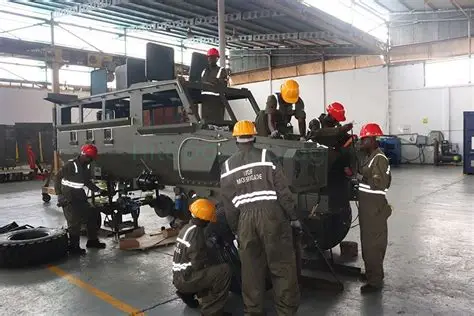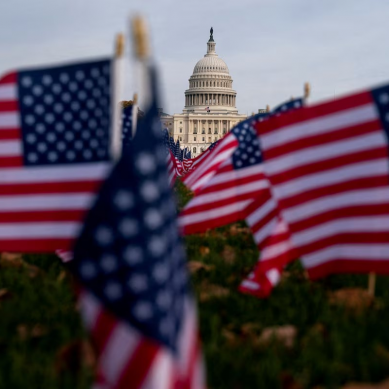
There was a time in the 1960s when the economy of Uganda was doing much better than the economies of countries that came to be known as the Asian Tigers (that is, Thailand, Singapore, South Korea and Hong Kong).
South Korea sent a delegation to Kampala to learn how exactly the Ugandan economic miracle proceeded. This was despite the fact that the Asian Tigers had started on their industrialisation path by 1950.
By the time the Asian Tigers arrived in the 1990s, they had overtaken Uganda in economic growth and development by far because of the country’s chaotic socio-political road marked with military coups and the five-year bush war by Tibuhaburwa Museveni’s National Resistance Movement/Army (NRM/A). It was as if the bush war was launched to destroy any growth, development, transformation and progress recorded in Uganda since colonial times for interests that had nothing to do with the country’s craving for growth, development, transformation and progress.
The cooperative movement, which had played a critical role in building the economy and empowering the citizens, both economically and financially, was virtually erased from the face of the Earth and its financial wealth and infrastructure grabbed by the combatants. The combatants went on to ransack the industries of Jinja and even, reportedly, transferred some equipment to Rwanda.
This was not surprising because NRA was over-infested with Rwandese Tutsi elements most of whom had escaped from refugee camps in Uganda to join the militarised outfit. They had interest to use Uganda’s financial and environmental resources to go back to their country. They found Yoweri Museveni’s craving for power in Uganda a pathway for them to realise their own objective for power in Rwanda. It is, therefore, an overstatement to suggest they joined NRA to liberate Ugandans from Ugandans.
In the wake of NRA’s vandalisation Uganda’s economy, there was almost nothing left to call a Ugandan asset. Individual assets became more important than national assets. Assets such as hotels that had survived the vandalisation were sold to individual combatants, families and/or relatives of the combatants or some Indian businessmen for peanuts.
Effectively, Uganda was brought to its knees while the Asian Tigers forged ahead. By the beginning of the 21st century, the Asian Tigers had developed into high income economies, producing all types of goods and services and in high tech businesses. Meanwhile Uganda was in deep in the abyss of underdevelopment, either importing the manufactured, including electric equipment or second-hand goods from Asia, including clothing and vehicles.
Despite this cruel reality, President Tibuhaburwa Museveni has consistently and persistently told Ugandans that Uganda has become a mid-income country during his reign although it is highly doubtful that the country has emerged out of the abyss of underdevelopment. According to the International Monetary Fund (IMF), cited in The Observer’s article ‘IMF: Uganda is still a low-income country’ of May 7, 2025, Uganda is still a low income country.
Frequently the Uganda government refers to the economy of the country as growing; not developing. It is quick to cite changes upwards in the gross domestic product (GDP), which only refers to the accumulation and movement of goods and services, not factoring in the people in its equation. Apparently, as the GDP figures have been impressively rising, the quality of life for the majority of Ugandans, particularly in the rural areas, has been plummeting to worrying levels.
While there are suggestions that achieving improved growth rates and structural transformation will require a rapid rate of export growth and economic diversification, as well as increase of productivity in various sectors of the economy, mainly agriculture, through improved inputs and food processing, President Tibuhaburwa Museveni has chosen:
- Giving money bonanzas to select, usually partisan, individuals, through the Parish Development Model (PDM), Myooga and Operation Wealth Creation, which are together siphons off billions of shillings, ostensibly to create wealth among Ugandans, but is ending in the pockets or bank accounts of corrupt government officials.
- Placing all industrialisation efforts in the hands of foreigners (mainly Indians, Chinese and some Rwandese Tutsis connected to some individuals in government).
No one will doubt that many industries have sprang up to replace those destroyed during the bush war or sold to the combatants and foreigners. However, the persistent question is: “To what extent are the industries benefiting Uganda and Ugandans? It is true that there being no minimum wage, having been removed by President Tibuhaburwa Museveni – ostensibly to create cheap labour for investors – many Ugandans are working more or less like slaves and dying in large numbers because of poverty because they are unable to access health facilities, which may lack adequate medicines and medical staff because the state prioritises militarisation and politics.
Foreign investors are not only given public money as start-up capital but they are also given 10-year tax holidays and allowed to repatriate all the profits they make to their countries of origin, while local investors are totally ignored, overtaxed or else exposed to multiple taxation .
In this article, ‘Was it Wise for Uganda to go into Vehicle Making?’ I want to explore what benefits Uganda and Ugandans are reaping or going to reap from the Jinja-based vehicle assembly plant or enterprise. Ugandans, generally believe the country is manufacturing vehicles (buses and cars). Let me ask these questions:
- Is Uganda manufacturing or assembling vehicles?
- Does Uganda have a vehicle assembly plant or vehicle manufacturing plant?
- Is the vehicle making activity draining or revitalising the economy?
Some history is important towards answering these questions. The Uganda government partnered with Streit Group, a global armoured vehicle manufacturer, to establish an armoured vehicle manufacturing and assembly plant in Nakasongola. This partnership aims to produce vehicles for Uganda’s military, police, VIPs and regional requirements, promoting technology transfer and local capacity building. Additionally, the state-owned Kiira Motors Corporation (KMC) partnered with a Chinese firm, Hi-Tech Group Corporation (HTGC) to make buses and other vehicles at the Jinja-based vehicle assembly plant in Uganda.
The Uganda government is the primary funder of the vehicle making enterprise in Jinja through the state-owned KMC. The government invested nearly Ush335 billion ($ 89 million) from 2018-2023. The government holds 96 per cent ownership of the enterprise through KMC, and the rest is held by Makerere University. For the 2024/2025 KMC wanted Ush166.64 billion but the government approved only Ush32.5 billion.
With the widening funding gap, the steep decline in the productive capacity of the country and spiralling borrowing spree of government from both foreign and domestic money markets, it is likely the project may emerge as yet another white elephant one.
A white elephant project is a phrase used in reference to a financial endeavour that fails to live up to its expectations or a project whose cost, particularly that if maintenance, is out of proportion to its usefulness.
This then make the question: Was it a wise decision of Uganda to go into vehicle making? An enduring question demanding intensive debate. However, in Uganda debate is almost dead. We are treated to decision-making by one person: President Tibuhaburwa Museveni.
The Uganda government’s decision to venture into vehicle making has sparked debate among citizens and industry experts. To understand the implications of this move, it’s essential to distinguish between a vehicle assembly plant and a vehicle manufacturing plant.
*Vehicle assembly plant vs. vehicle manufacturing plant:*
Definition
A facility where imported vehicle parts are assembled into complete vehicles is a vehicle assembly plant.
- In this case, level of local content typically low, with most parts imported.
- Technology transfer limited, as assembly is often done using imported technology.
- Technology transfer limited, as assembly is often done using imported technology.
- Fewer jobs created, mostly in assembly and quality control.
- Economic impact limited, as most profits go to foreign companies.
A facility where vehicles are built from scratch, with most parts produced in-house is a vehicle manufacturing plant.
- Local content is higher, with more parts produced locally.
- Significant, as local engineers and technicians are trained to produce vehicles.
- More jobs created in various stages of production from design to manufacturing.
- Economic impact is higher as more value is added locally, contributing to GDP growth.
In Uganda’s case, the government has partnered with a foreign company to establish a vehicle assembly plant. While this move may provide some benefits, such as creating jobs and introducing new technology, it’s crucial to consider the long-term implications.
*Challenges and opportunities:*
- The plant relies heavily on imported parts, which may lead to foreign exchange losses and vulnerability to global market fluctuations.
- Limited technology transfer and local content may hinder the development of Uganda’s automotive industry.
- The government may be subsidising the venture, which could divert resources from other critical sectors such as healthcare and education.
- The plant may create employment opportunities but the number of jobs created may be limited compared to other industries.
To make the venture successful, the government should focus on:
- Increasing local content and sourcing parts from local suppliers.
- Investing in skills development and training for Ugandan engineers and technicians.
- Encouraging technology transfer and collaboration with local universities and research institutions.
- Ensuring transparency and accountability in the management of the plant.
Ultimately, whether the decision to venture into vehicle making was wise depends on the government’s priorities and the terms of the partnership. If the focus is on creating jobs and stimulating economic growth, the government should ensure that the venture benefits Ugandans and contributes to the country’s overall long-term development.
- A Tell report / By Oweyegha-Afunaduula / Environmental Historian and Conservationist Centre for Critical Thinking and Alternative Analysis (CCTAA), Seeta, Mukono, Uganda.
About the Centre for Critical Thinking and Alternative Analysis (CCTAA)
The CCTAA was innovated by Hyuha Mukwanason, Oweyegha-Afunaduula and Mahir Balunywa in 2019 to the rising decline in the capacity of graduates in Uganda and beyond to engage in critical thinking and reason coherently besides excellence in academics and academic production. The three scholars were convinced that after academic achievement the world outside the ivory tower needed graduates that can think critically and reason coherently towards making society and the environment better for human gratification. They reasoned between themselves and reached the conclusion that disciplinary education did not only narrow the thinking and reasoning of those exposed to it but restricted the opportunity to excel in critical thinking and reasoning, which are the ultimate aim of education. They were dismayed by the truism that the products of disciplinary education find it difficult to tick outside the boundaries of their disciplines; that when they provide solutions to problems that do not recognise the artificial boundaries between knowledges, their solutions become the new problems. They decided that the answer was a new and different medium of learning and innovating, which they characterised as “The Centre for Critical Thinking and Alternative Analysis” (CCTAA).






